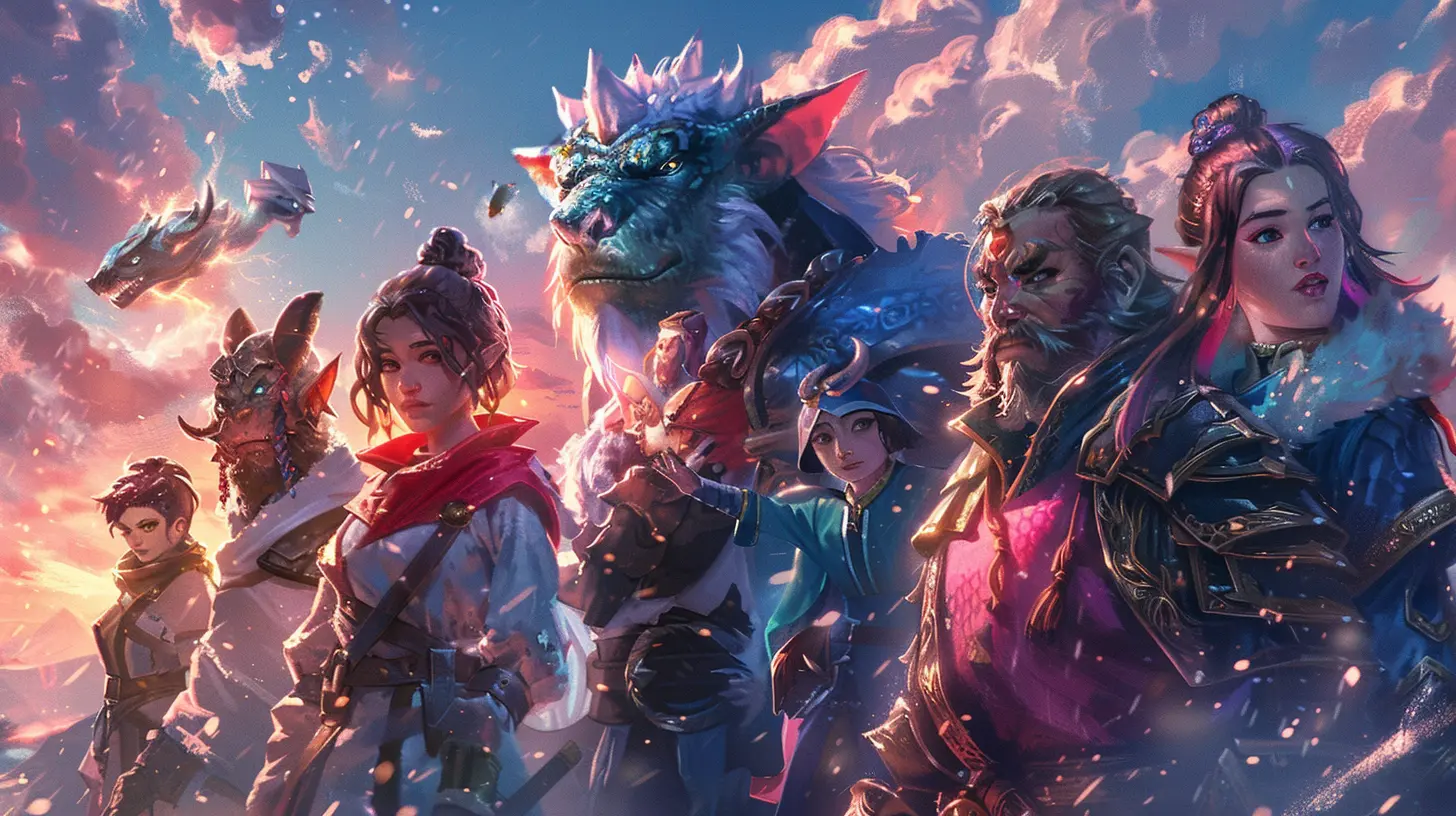Breaking Down the Economics of Free-to-Play Games
17 August 2025
If there’s one business model in gaming that has taken the industry by storm, it’s the Free-to-Play (F2P) model. Whether you’re slashing your way through hordes in Genshin Impact, competing in Fortnite battle royales, or farming resources in Clash of Clans, chances are you’ve come across F2P games. But have you ever stopped to wonder how these games make money when they’re, well... free? Let’s break it down.
Free-to-Play isn’t just a business model; it’s a full-blown economic ecosystem. It’s a clever combination of psychology, strategy, and good ol’ market demand. And while it might seem straightforward on the surface—“let them play for free, charge for extras”—the mechanics behind it are anything but. So, buckle up, because we’re diving into the nuts and bolts of free-to-play economics!
The Birth of the Free-to-Play Model
Before we get into the economics, let’s rewind for a second. Free-to-Play didn’t just appear out of nowhere. It was born out of two things: accessibility and competition. Back in the early 2000s, subscription-based models like World of Warcraft were the norm. Pay upfront, play forever.But here’s the kicker: not everyone could afford to pay upfront for games. The developers realized that by removing the price barrier, they could increase their player base exponentially. Think of it like a party—if there’s no cover charge, more people are bound to show up, right? Boom, the F2P model was born, and it’s been evolving ever since.
What Drives Revenue in Free-to-Play Games?
The big question: if the games are free to download and play, how do these companies make billions? Well, let’s break it down:1. Microtransactions: The Heavy Hitter
Microtransactions are the bread and butter of Free-to-Play games. These are small purchases players can make within the game, ranging from $0.99 for extra coins to $99 bundles stuffed with goodies. And trust me, these small payments add up fast.
Picture this: A game has 10 million players. Even if only 5% of those players spend $10 a month, that’s $5 million in revenue—every month. In game development lingo, these spenders are often referred to as “whales,” and they’re the ones keeping the ship afloat.
But don’t think it’s just about whales. Microtransactions are designed to appeal to all types of players. Whether it’s buying an extra life, unlocking a cool skin for your character, or grabbing an XP boost—it’s all about adding value for the player.
2. In-Game Advertisements
Ever played a mobile game and had to sit through a 30-second ad for extra rewards? That’s ad revenue at work. Advertisements are another major revenue stream for Free-to-Play games. Developers partner with advertisers and get paid every time you watch an ad or click on it.
And here’s the sneaky part: developers use psychology to make ads feel like a reward. “Watch this ad to double your loot!” feels like a win-win, doesn’t it? But every time you see that ad, a few pennies go into the developer’s pocket. It’s like putting coins in a jar—and over time, those jars fill up fast.
3. Battle Passes and Subscriptions
Some Free-to-Play games offer optional subscriptions or battle passes. These are seasonal purchases that grant players exclusive rewards, skins, and other perks. Fortnite’s Battle Pass system is a perfect example—it’s priced affordably, feels rewarding, and encourages consistent play.It’s a win for both the player and developer. You get an immersive experience, and they get a steady stream of income. Kind of like signing up for a gym membership… but for your gaming fingers.
4. Cosmetics and Customization
Ah, the power of looking cool. One of the most brilliant aspects of Free-to-Play games is their use of cosmetic items—like skins, emotes, and custom outfits. None of these items have any impact on gameplay (in most cases), but boy, do they sell like hotcakes.Why? Humans are wired to seek individuality, even in virtual worlds. If you’re playing alongside millions of others, there’s a certain swagger in rocking a one-of-a-kind skin that costs $20. And let’s face it, peer pressure plays a role too. When your squad all buys matching outfits, it’s hard to say no.
The Role of Player Psychology
Speaking of psychology… Free-to-Play games are masters at leveraging human behavior. Developers use a mix of urgency, fear of missing out (FOMO), and instant gratification to keep players spending. Let me explain:- Limited-Time Offers: Ever seen “50% off—24 hours only!” in a game shop? That’s urgency at play. It taps into your fear of missing out.
- The Power of Progression: Games are designed to give you just enough progress to feel accomplished, but slow enough to make you consider spending. Feeling stuck? Buy a booster!
- Social Proof: When you see other players rocking cool gear or exclusive items, there’s a natural urge to join the club. It’s a virtual game of keeping up with the Joneses.
The Hidden Costs of Free-to-Play
But here’s the thing: Free-to-Play games aren’t all rainbows and butterflies. For all their brilliance, they’ve also sparked debate about ethics and addiction. Why? Because the spending mechanics can sometimes prey on vulnerable players.Take loot boxes, for example. These are randomized rewards you pay for, with no guarantee of what you’ll get. Sound familiar? Yep, it’s eerily similar to gambling. That’s why some countries have started regulating loot boxes—or even banning them outright.
Then there’s the issue of “pay-to-win.” That’s when paying players gain unfair advantages over free players, essentially turning games into a wallet-flex competition. For some, it’s a dealbreaker. For others? Just the cost of having fun.
Why Free-to-Play Works (And Isn’t Going Anywhere)
Okay, so why does Free-to-Play work so well? The answer lies in accessibility. By removing barriers to entry, F2P games can reach massive audiences. And the beautiful part? You don’t need everyone to spend money—just a tiny slice of the player base is enough to make a game wildly profitable.Plus, the developers constantly adapt. They listen to their communities, improve their offerings, and add fresh content to keep players engaged. It’s a cycle of evolution that keeps games alive for years, even decades.
What’s Next for Free-to-Play?
As the gaming industry grows, so does the Free-to-Play model. We’re already seeing it expand beyond traditional gaming into areas like the metaverse, where players can buy virtual real estate, NFT-based skins, and other digital assets.And with emerging technologies like cloud gaming and augmented reality, the future of Free-to-Play is looking bigger (and more profitable) than ever.
Wrapping It Up
So, there you have it—the economics behind Free-to-Play games. It’s a fascinating blend of accessibility, psychology, and business acumen. And while it has its downsides (lookin’ at you, loot boxes), there’s no denying the model has revolutionized the gaming industry.The next time you’re farming coins, battling opponents, or watching an ad for double rewards, remember that you’re a tiny cog in a massive machine. A free game might seem like a gift, but underneath it? It’s a money-making masterpiece.
all images in this post were generated using AI tools
Category:
Gaming IndustryAuthor:

Emery Larsen
Discussion
rate this article
2 comments
Luella McTiernan
Free-to-play games cleverly exploit psychological triggers, converting casual players into dedicated users. Understanding their economic models reveals how they balance monetization and player retention, ultimately reshaping the gaming landscape and influencing user experiences.
December 26, 2025 at 6:07 AM
Darby Black
Understanding free-to-play economics reveals how player engagement transforms into sustainable revenue models.
August 23, 2025 at 3:53 AM

Emery Larsen
Thank you! I'm glad you found the insights on player engagement and revenue models valuable. It's fascinating how free-to-play mechanics can shape the gaming landscape!


